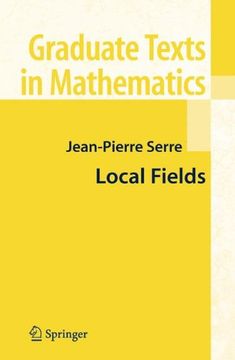Share
Local Fields: V. 67 (Graduate Texts in Mathematics)
Jean-Pierre Serre (Author)
·
Springer
· Hardcover
Local Fields: V. 67 (Graduate Texts in Mathematics) - Jean-Pierre Serre
£ 64.27
£ 71.41
You save: £ 7.14
Choose the list to add your product or create one New List
✓ Product added successfully to the Wishlist.
Go to My WishlistsIt will be shipped from our warehouse between
Monday, June 03 and
Thursday, June 06.
You will receive it anywhere in United Kingdom between 1 and 3 business days after shipment.
Synopsis "Local Fields: V. 67 (Graduate Texts in Mathematics)"
The goal of this book is to present local class field theory from the cohomo logical point of view, following the method inaugurated by Hochschild and developed by Artin-Tate. This theory is about extensions-primarily abelian-of "local" (i.e., complete for a discrete valuation) fields with finite residue field. For example, such fields are obtained by completing an algebraic number field; that is one of the aspects of "localisation". The chapters are grouped in "parts". There are three preliminary parts: the first two on the general theory of local fields, the third on group coho mology. Local class field theory, strictly speaking, does not appear until the fourth part. Here is a more precise outline of the contents of these four parts: The first contains basic definitions and results on discrete valuation rings, Dedekind domains (which are their "globalisation") and the completion process. The prerequisite for this part is a knowledge of elementary notions of algebra and topology, which may be found for instance in Bourbaki. The second part is concerned with ramification phenomena (different, discriminant, ramification groups, Artin representation). Just as in the first part, no assumptions are made here about the residue fields. It is in this setting that the "norm" map is studied; I have expressed the results in terms of "additive polynomials" and of "multiplicative polynomials", since using the language of algebraic geometry would have led me too far astray.
- 0% (0)
- 0% (0)
- 0% (0)
- 0% (0)
- 0% (0)
All books in our catalog are Original.
The book is written in English.
The binding of this edition is Hardcover.
✓ Producto agregado correctamente al carro, Ir a Pagar.

